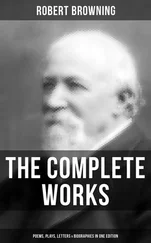There is more truth than fiction to that idea. The measurement of life by the calendar robs youth of its vigor and hastens old age. It reminds me of the days of our grandparents, when a woman was supposed to doll her hat and don a bonnet at 40. And donning a bonnet was like taking the veil. She was supposed to retire to her chimney corner and make way for the younger generation.
Men and women ought to grow with years into greater health, broader judgment, maturer wisdom. Instead of becoming atrophied, and dead to all new ideas, their minds should through practice hold ever stronger images before them of youthful vigor and freshness. The Psalmist says—"But thou art the same, and thy years shall have no end."
No one need retire to the chimney corner, no matter how many years have passed over his head. Years should bring wisdom and greater health—not decrepitude. Many of the world's famous men did their greatest work long after the age when most men are in their graves. Tennyson composed the immortal lines of "Crossing the Bar" at the age of 80. Plato still had pen in hand at 81. Cato learned Greek at the same age. Humboldt completed his "Cosmos" in his ninetieth year, while John Wesley at 82 said—"It is twelve years now since I have felt any such sensation as fatigue."
You are only as old as your mind. Every function, every activity of your body, is controlled by your mind. Your vital organs, your blood that sends the material for rebuilding to every cell and tissue, the processes of elimination that remove all the broken down and waste material, all are dependent for their functioning upon the energy derived from your mind.
The human body can be compared to an electric transportation system. When the dynamo runs at full power every car speeds along, and everything is handled with precision. But let the dynamo slow down and the whole system lags.
That dynamo is your mind, and your thoughts provide the energy that runs it. Feed it thoughts of health and vigor and your whole system will reflect energy and vitality. Feed it thoughts of decrepitude and age, and you will find it slowing down to the halting pace you set for it.
You can grow old at 30. You can be young at 90. It is up to you. Which do you choose?
If you choose youth, then start this minute renewing your youth. Find a picture—or, better still, a statuette—of the man you would like to be, the form you would like to have. Keep it in your room. When you go to bed at night, visualize it in your mind's eye—hold it in your thought as YOU —as the man YOU ARE GOING TO BE!
The Journal of Education had the idea in their story of "The Prince and the Statue" in a recent issue:
“There was once a prince who had a crooked back. He could never stand straight up like even the lowest of his subjects. Because he was a very proud prince his crooked back caused him a great deal of mental suffering.
“One day he called before him the most skilful sculptor in his kingdom and said to him: 'Make me a noble statue of myself, true to my likeness in every detail with this exception—make this statue with a straight back. I wish to see my-self as I might have been.
“For long months the sculptor worked hewing the marble carefully into the likeness of the prince, and at last the work was done, and the sculptor went before the prince and said: 'The statue is finished; where shall I set it up?' One of the courtiers called out: 'Set it before the castle gate where all can see it,' but the prince smiled sadly, and shook his head. 'Rather,' said he, 'place it in a secret nook in the palace garden where only I shall see it.' The statue was placed as the prince ordered, and promptly forgotten by the world, but every morning, and every noon, and every evening the prince stole quietly away to where it stood and looked long upon it, noting the straight back and the unlifted head, and the noble brow. And each time he gazed, something seemed to go out of the statue and into him, tingling in his blood and throbbing in his heart.
“The days passed into months and the months into years; then strange rumors began to spread throughout the land. Said one: 'The prince's back is no longer crooked or my eyes deceive me.' Said another: 'The prince is more noble-looking or my eyes deceive me.' Said another: 'Our prince has the high look of a mighty man,' and these rumors came to the prince, and he listened with a queer smile. Then went he out into the garden to where the statue stood and, behold, it was just as the people said, his back had become as straight as the statue's, his head had the same noble bearing; he was, in fact, the noble man his statue proclaimed him to be.”
A novel idea? Not at all! 2,500 years ago, in the Golden Age of Athens, when its culture led the world, Grecian mothers surrounded themselves with beautiful statues that they might bring forth perfect children and that the children in turn might develop into perfect men and women.
Eleven months from now you will have an entirely new body, inside and out. Not a single cell, not a single bit of tissue that is now in you will be there then. What changes da you want made in that new body? What improvements?
Get your new model clearly in your mind's eye. Picture it. VISUALIZE it! Look FORWARD daily w a better physique, to greater mental power.
Give that model to your Subconscious Mind to build upon—and before eleven months are out, that model WILL BE YOU!
Table of Contents
XXIII. THE MEDICINE DELUSION
Table of Contents
"I find the medicine worse than the malady."
—Shakespeare.
We are getting rid of the drug illusion," declared Dr. Woods Hutchinson, the noted medical writer of America, at a luncheon given on June 6, 1925, by the English-Speaking Union to 700 American and Canadian doctors assembled in London, England.
"We are willing even to subscribe to the dictum of Oliver Wendell Holmes," the doctor added, "that if 99 per cent of all drugs we possess were thrown into the sea it would be a good thing for the human race, but rather hard on the fishes."
Sir Arbuthnot Lane, Surgeon to King George, seconded Dr. Hutchinson's re-marks. "They might say," he went on, "that he was trying to establish a 'suicide club' for doctors. It practically came to that, because as the public became educated in matters of health the medical profession might disappear. It was in fact an anomaly that a medical profession should exist. If people were healthy, there was no reason to have doctors at all."
Twenty-five years ago, the charms of the Patent Medicine fakir and the incantations of the Indian Medicine Man were in the heyday of their popularity. So long as you talked about their aches and pains, their diseases and ailments, people would buy any kind of a nostrum that an unscrupulous fakir chose to palm off upon them. Patent medicine manufacturers made fabulous fortunes selling cheap whisky adulterated with burnt sugar and water, under a hundred different names for $1.00 the bottle. You could hardly pick up a magazine or newspaper without seeing a dozen of their lurid ads.
The day of the Indian Medicine Man and street-corner fakir has passed. And for a time, thanks to the crusade against them led by Collier's , and backed by a number of other reputable magazines, patent medicine manufacturers suffered an eclipse.
But they are back again today in a more respectable guise.
Pick up almost any small town paper and you will find a dozen "sovereign remedies" for tired women or fretful children or run-down men. Concoctions, most of them, containing just enough alcohol to give you a pleasant sense of stimulation, enough burnt sugar to color them—and a whole lot of water.
Читать дальше












